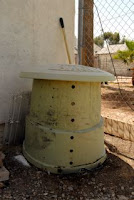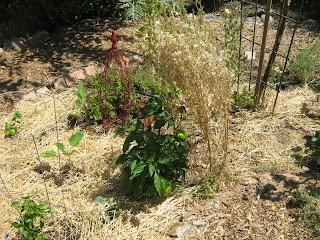September Gardening Tips
(as found on the Maricopa County Extension Office website and
What to do in Your Garden this Month)
Turf
- Fertilize Bermuda-grass lawns with Nitrogen each month beginning late April or early May according to the directions on the package.
- Apply Iron each month according to the directions on the package.
- Apply one inch of water per week to Bermuda lawns. Water deep and less often. Find watering instructions here on
Arizona Water Users Association website
Vegetables
- Prepare bed for fall planting: add organic materials, compost, nitrogen (blood meal)
- Plant Seeds:
Snap Peas, Beets, Bok Choy, Broccoli, Brussels Sprouts, Cabbage, Chinese Cabbage, Carrots, Cauliflower, Celery, Chard, Collard Greens, Endive, Garlic, Kale, Kohlrabi, Leeks, Mustard, Onions, Peas, Turnips
Herbs
- Prepare bed for fall planting: add organic materials like compost
- Plant Seeds: Cilantro, Lavender, Parsley, Sage, Thyme, Oregano (transplant- will spread)
Roses
- Resume full fertilizing of established roses as the weather cools
- Toward the end of August and into September add an iron supplement if roses show yellowing from iron deficiency
Succulents
- Plant and spilt agaves, yuccas and cactus (remember the holidays are coming – put in a nice pot for a gift)
- Cut back on watering when temps drop by 10 degrees. Should spread out watering to 3-4weeks for small plants; 5-6 weeks large plants during winter.
Fruit and Nut Trees
-
Fertilize Citrus by mid-month.
- Cut back on water once temps are below 100 degrees to every two weeks. Helps Citrus and deciduous fruit trees prepare for winter.
- Apply nitrogen and zinc to pecan trees to produce normal size leaf growth and to enhance kernel development. Pecans also need more water than most other shade trees.
Landscape Plants
- Apply mulch (a great use for your compost!) to the ground around heat sensitive plants keep the roots cooler and prevent evaporation.
- Cut off spent blooms to stimulate rebloom
- Native and imported heat tolerant plants can be planted right through the September. They will need to be watered on a regular basis until it cools in fall.
- Protect newly transplanted trees from heavy winds and dust storms by staking carefully
- Plant any non frost sensitive tree
- Final fertilizer for container plants.
Annuals
- Plant flower seeds when under 100 degrees.
Here's a list to guide you.
- Bulbs – Buy now & refrigerate for 6-8 weeks in a brown bag in an area by themselves (not with fruit or veggies). Can plant when below 90 degrees during day.
Don't List . . .
-Do not increase opportunities for fungal disease on turf by over watering or watering at night.
-DO NOT OVER WATER which will result in root rot. Allow the soil to dry out between watering.
Doreen Pollack is the Garden Goddess and owner of Down 2 Earth Gardens, providing garden consultations and coaching. Join her for free gardening tips at monthly What to Do in Your Garden this Month workshops. To find a workshop near you, visit www.down2earthgardens.com or call 623.217.6038.

























































